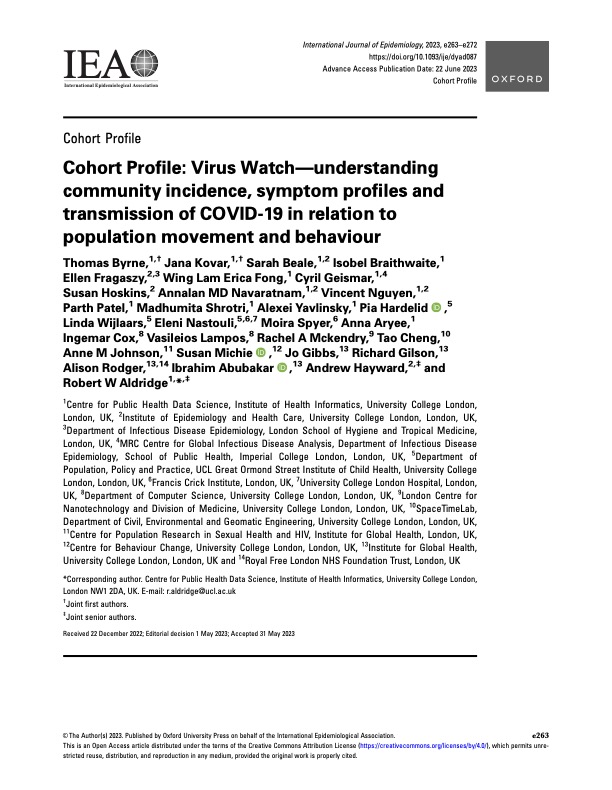Publication links
Key Features
- Virus Watch is a national community cohort study of COVID-19 in households in England and Wales, established in June 2020. The study aims to provide evidence on which public health approaches are most effective in reducing transmission, and to investigate community incidence, symptoms and transmission of COVID-19 in relation to population movement and behaviours.
- In all, 28 527 households and 58 628 participants of age (0–98 years, mean age 48), were recruited between June 2020 and March 2022.
- Data collected include demographics and details of occupation, comorbidities, medications and infection-prevention behaviours. Households are followed up weekly with illness surveys capturing symptoms and their severity, activities in the week prior to symptom onset and any COVID-19 test results. Additional occasional surveys capture household finance, employment, mental health, access to health care, vaccination uptake, activities and contacts. Data have been linked to Hospital Episode Statistics (HES), inpatient and critical care episodes, outpatient visits, emergency care contacts, mortality, virology testing and vaccination data held by National Health Service (NHS) Digital.
- Nested within Virus Watch are a serology and Polymerase Chain Reaction (PCR) cohort study (n = 12 877) and a vaccine evaluation study (n = 19 555).
- Study data are deposited in the Office of National Statistics (ONS) Secure Research Service (SRS). Survey data are available under restricted access upon request to ONS SRS.
Citation
Byrne T, Kovar J, Beale S, Braithwaite I, Fragaszy E, Fong WLE, Geismar C, Hoskins S, Navaratnam AMD, Nguyen V, Patel P, Shrotri M, Yavlinsky A, Hardelid P, Wijlaars L, Nastouli E, Spyer M, Aryee A, Cox I, Lampos V, Mckendry RA, Cheng T, Johnson AM, Michie S, Gibbs J, Gilson R, Rodger A, Abubakar I, Hayward A, Aldridge RW. Cohort Profile: Virus Watch-understanding community incidence, symptom profiles and transmission of COVID-19 in relation to population movement and behaviour. Int J Epidemiol. 2023 Oct 5;52(5):e263-e272. doi: 10.1093/ije/dyad087. PMID: 37349899; PMCID: PMC10555858.

